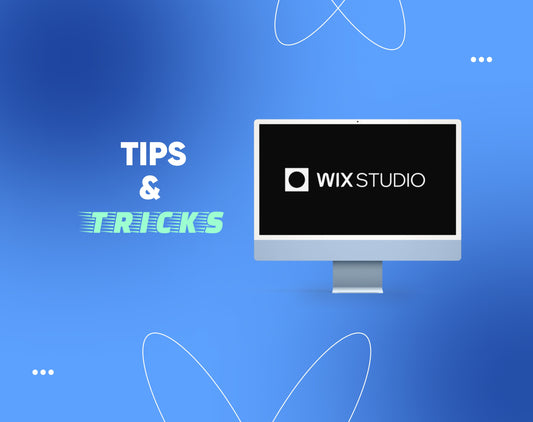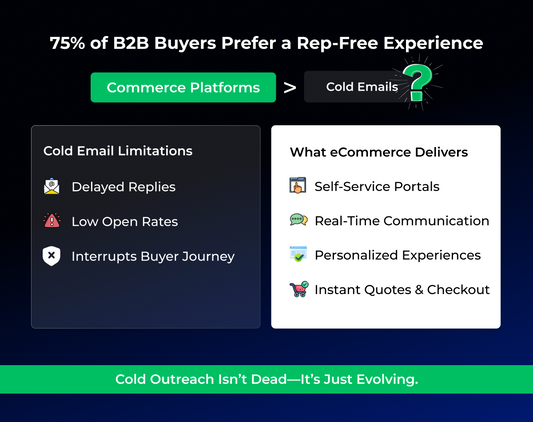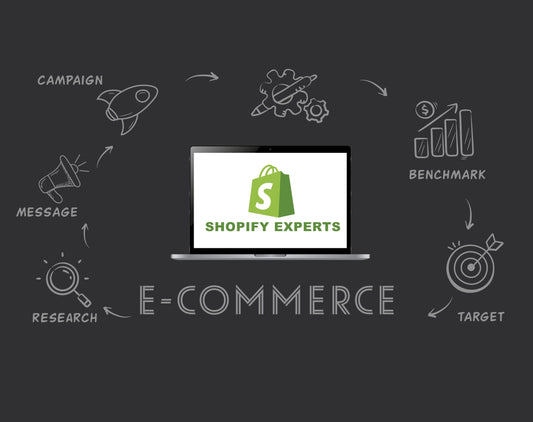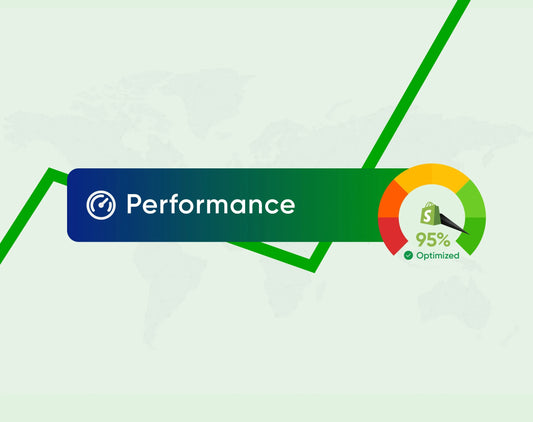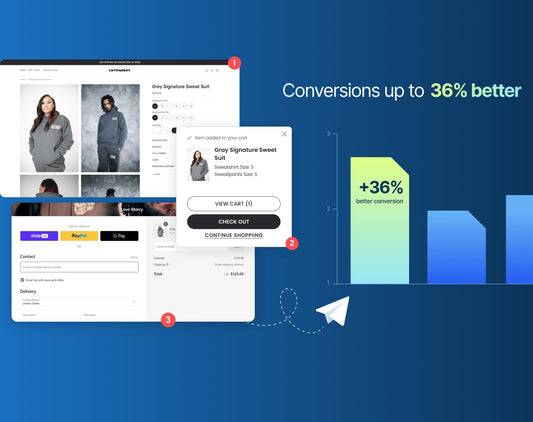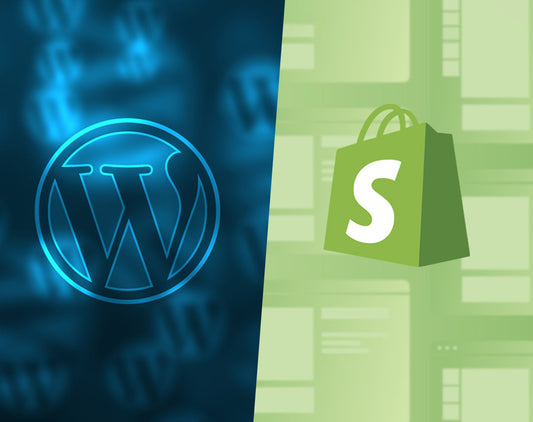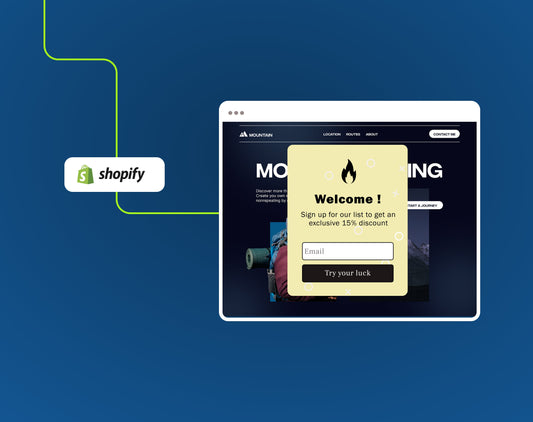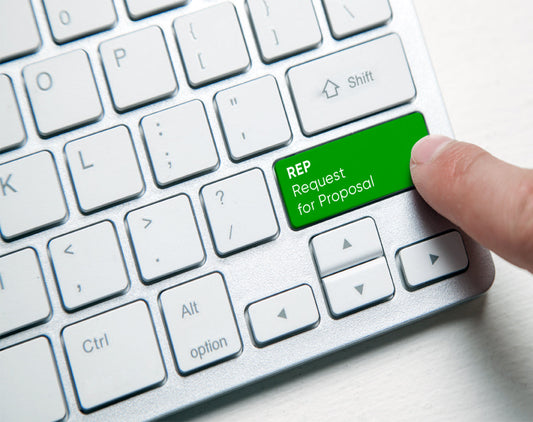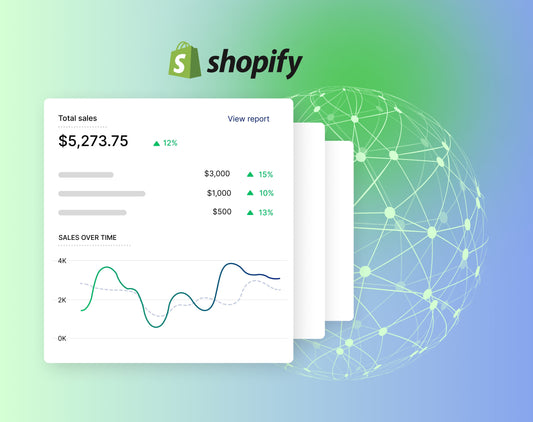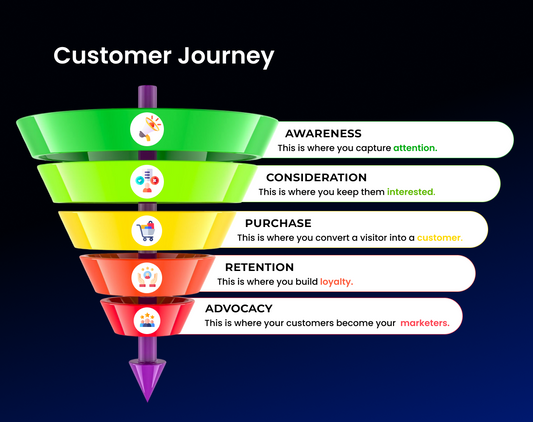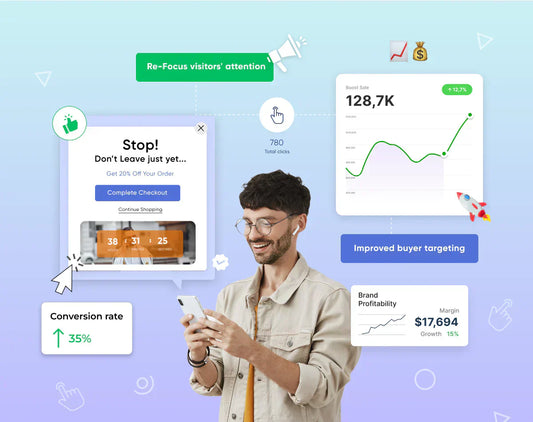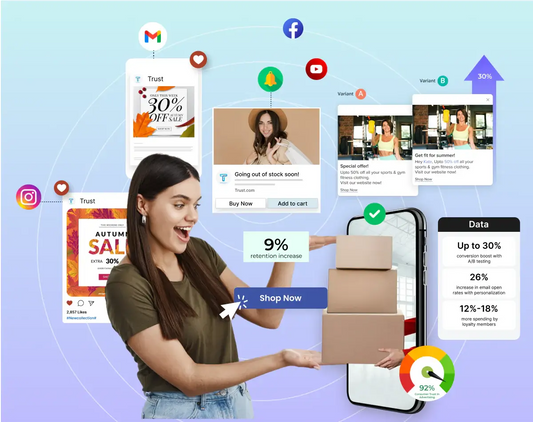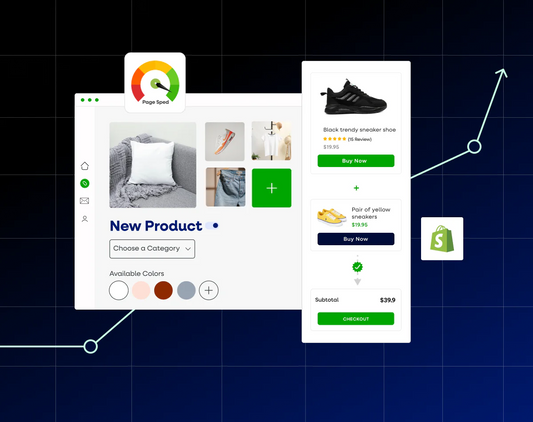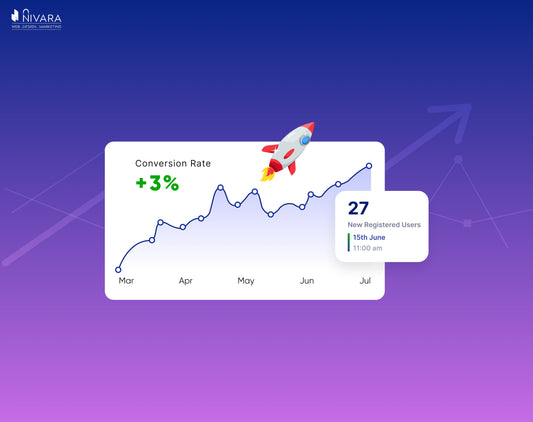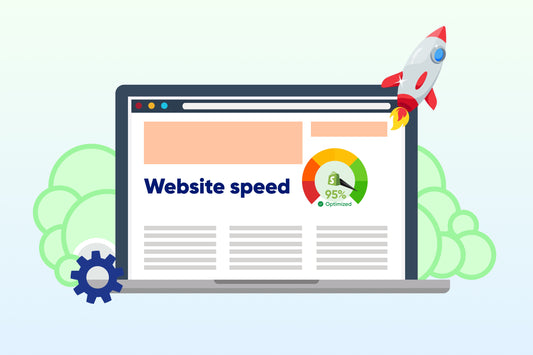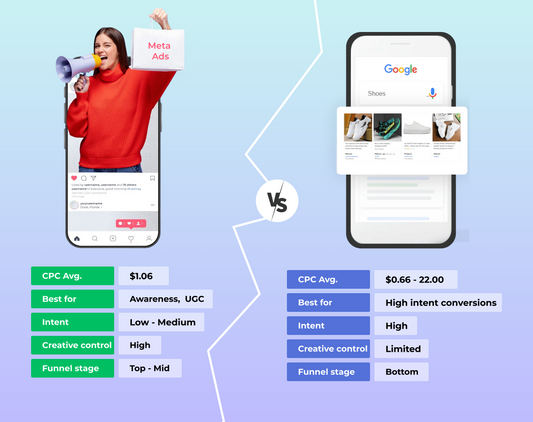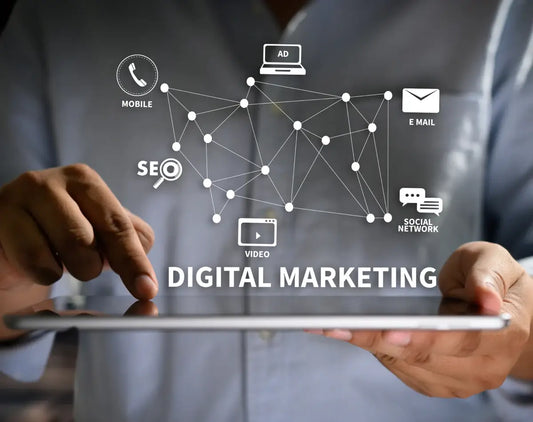In This Story
Email marketing is a pivotal part of eCommerce success in 2025. Studies show that for every $1 spent on email marketing, businesses earn $42, making it one of the most profitable digital marketing tools. Still, many businesses don’t use it to its full potential, missing out on a lot of possible income.
To thrive in today's competitive market, brands must focus on eCommerce performance optimization for their email campaigns.
Why email marketing still reigns supreme in 2025?
With the surge of social media platforms and evolving digital marketing channels, you might wonder why email marketing still holds such power. The answer is simple: personalization and direct communication. Unlike social media, where algorithms dictate visibility, emails land directly in your customer's inbox. These offer a personalized touch that fosters trust & engagement.
Personalized email campaigns can boost click-through rates by 14% and increase conversions by 10%. When you add smart eCommerce strategies, these results can grow even more, leading to real business growth.
Moreover, emails give brands control over their audience, unlike social media platforms that can change their rules or algorithms at any time. With an email list, you always have a steady, reliable way to connect with your customers.
9 ecommerce performance optimization tips
1. Segment your audience for precision targeting

Generic email campaigns don’t cut it anymore. To get the best results, you need to segment your audience. Break them into groups based on age, buying habits, behavior & how they interact with your emails. This way, you can send content that really connects with each segment.
Actionable tip:
- Use dynamic content to personalize product recommendations.
- Create segmented lists based on customer behavior (e.g. cart abandoners, repeat buyers, inactive subscribers).
- Segment by location to send localized offers or event invitations.
Why it works: Segmented campaigns can achieve up to 760% increase in revenue, according to Campaign Monitor. When customers see content that matches their interests, they’re more likely to engage, trust your brand, and come back to buy again.
Example:
A clothing store groups its customers by gender and what they’ve bought before. Instead of sending the same email to everyone about a new collection, they can make it personal.
For example, they might show winter jackets to people who recently bought sweaters or suggest summer dresses to those who purchased sandals.
2. Optimize your subject lines

Your subject line must be a hook! It determines whether the recipient will open or ignore your email. Crafting compelling, curiosity-driven subject lines while maintaining clarity is crucial.
Actionable tip:
- A/B test subject lines to see what resonates with your audience.
- Keep subject lines under 50 characters and make preheaders complementary.
- Use emojis sparingly to grab attention, but ensure they align with your brand voice.
Why it works: Personalized subject lines boost email open rates by 26%. A good subject line grabs attention. It sparks curiosity & creates urgency making people more likely to open the email.
Example:
A beauty brand might test two subject lines:
- Your Skin Deserves This Glow 🌟
- Unlock 20% Off Your Favorite Products!
By analyzing open rates, they can determine whether their audience responds better to emotional appeal or direct discounts.
3. Harness the power of automation

Automation is a performance booster. Setting up automated workflows for welcome emails, cart abandonment reminders & post-purchase follow-ups ensures timely communication.
Actionable tip:
- Implement a "win-back" campaign targeting inactive customers.
- Use trigger-based emails for special occasions like birthdays or anniversaries.
- Create post-purchase sequences that offer care tips, product recommendations, or loyalty rewards.
Why it works: Automated emails generate 320% more revenue than non-automated emails. They help your brand stay fresh in people’s minds and build relationships without you having to put in effort all the time.
Example:
An online bookstore can set up an automated series:
- Thank you email: Sent immediately after purchase, thanking the customer.
- Follow-up email: 1 week later, suggesting similar books.
- Review request: After 2 weeks, asking for a review of the purchased book.
4. Mobile optimization

Over 70% of emails are opened on mobile devices. If your emails aren't mobile-friendly, you're missing out on huge revenue.
Actionable tip:
- Use responsive design to ensure emails look great across all devices.
- Keep your call-to-action (CTA) buttons large and easy to tap.
- Optimize image sizes for faster loading and faster email rendering.
Why it works: Mobile-optimized emails can lead to a 15% increase in click-through rates. A seamless mobile experience ensures that subscribers can easily read, interact & convert, regardless of the device they're using.
Example:
A food delivery service ensures that its promotional emails have clear, clickable "Order Now" buttons and concise copy that's easy to skim on a smartphone.
5. Leverage data analytics for continuous improvement
Data is key to improving your eCommerce performance. Study email stats like open rates, clicks & conversions. Use what you learn to tweak and improve your strategies.
Actionable tip:
- Use heatmaps to see where subscribers are clicking.
- Track customer journeys to identify drop-off points.
- Compare different campaigns to identify trends and successful elements.
Why it works: Companies that use data-driven email marketing strategies see 5x higher ROI. Knowing what works and what doesn’t helps you focus on the strategies that bring good results and drop the ones that don’t.
Example:
A fitness brand notices that emails with video content have higher engagement. They incorporate short workout clips in future campaigns, leading to increased click-through rates and conversions.
6. Create engaging, value-driven content
Your emails should offer more than just promotions. Providing valuable content like tips, how-to guides, or industry insights, keeps your audience engaged and builds long-term relationships.
Actionable tip:
- Incorporate storytelling to make your emails more relatable.
- Use user-generated content to build community trust.
- Share exclusive behind-the-scenes content or sneak peeks to make subscribers feel special.
Why it works: Engaging content can increase subscriber retention rates by up to 40%. If your emails offer value instead of just being about transactions, people are more likely to stay subscribed and interested.
Example:
A skincare brand might share seasonal skincare tips, featuring real customer testimonials or before & after photos, to create a sense of community and trust.
7. Test, iterate, and optimize
Optimization is an ongoing process. Regularly testing different elements of your emails (design, content, timing) can uncover valuable insights and help you continuously improve.
Actionable tip:
- A/B test email layouts and sending times.
- Experiment with different CTAs to see what drives the most clicks.
- Analyze the impact of sending frequency on engagement and unsubscribe rates.
Why it works: Brands that consistently test and optimize their emails see 37% higher revenue growth. Continuous improvement ensures that your strategies evolve alongside your audience's preferences.
Example:
A travel agency tries sending emails on different days of the week. They find that people respond more to emails sent on weekends, which leads to more bookings.
8. Integrate your email marketing with other channels

For eCommerce performance optimization, integrate your email marketing with your social media, website & paid advertising strategies to create a cohesive customer journey.
Actionable tip:
- Use email to drive traffic to your social media campaigns.
- Retarget email subscribers with personalized ads on social platforms.
- Include social sharing buttons in your emails to encourage audience growth.
Why it works: Integrated campaigns can result in a 24% increase in conversion rates. Using multiple channels helps keep your message consistent and gives you more chances to connect with your audience.
Example:
A fashion retailer promotes a limited-time sale via email, retargets email subscribers with Facebook ads, and encourages followers to share their purchases on Instagram, creating a unified campaign across channels.
9. Focus on deliverability and compliance
Even the most well-written emails won’t get results if they don’t land in your audience’s inbox. It’s important to keep your deliverability rates high and follow rules like GDPR and CAN-SPAM.
Actionable tip:
- Regularly clean your email list to remove inactive subscribers.
- Use double opt-ins to confirm subscriptions and reduce bounce rates.
- Monitor your sender reputation and avoid spammy practices.
Why it works: High deliverability rates ensure that your messages reach your audience, while compliance builds trust and protects your brand from legal issues.
Example:
An online electronics store implements a double opt-in process, resulting in a more engaged and responsive email list, with fewer spam complaints and higher open rates.
Final thoughts
Digital marketing is constantly evolving, so it’s important to keep learning and adapting. When you optimize your email marketing for better eCommerce performance, you not only improve your current results but also create a solid plan for long-term growth.
Remember, the key to success lies in personalization, automation, data-driven decisions, and constant iteration. Implement these strategies and watch your email marketing transform from a basic tool into a powerhouse for your eCommerce business.
Are you ready to take your email marketing to the next level? Start optimizing today and unlock your store's full potential in 2025!
PS. Don't just follow trends - set them. Stay proactive in refining your email marketing strategies and embrace the power of eCommerce performance optimization to stay ahead of the curve.


